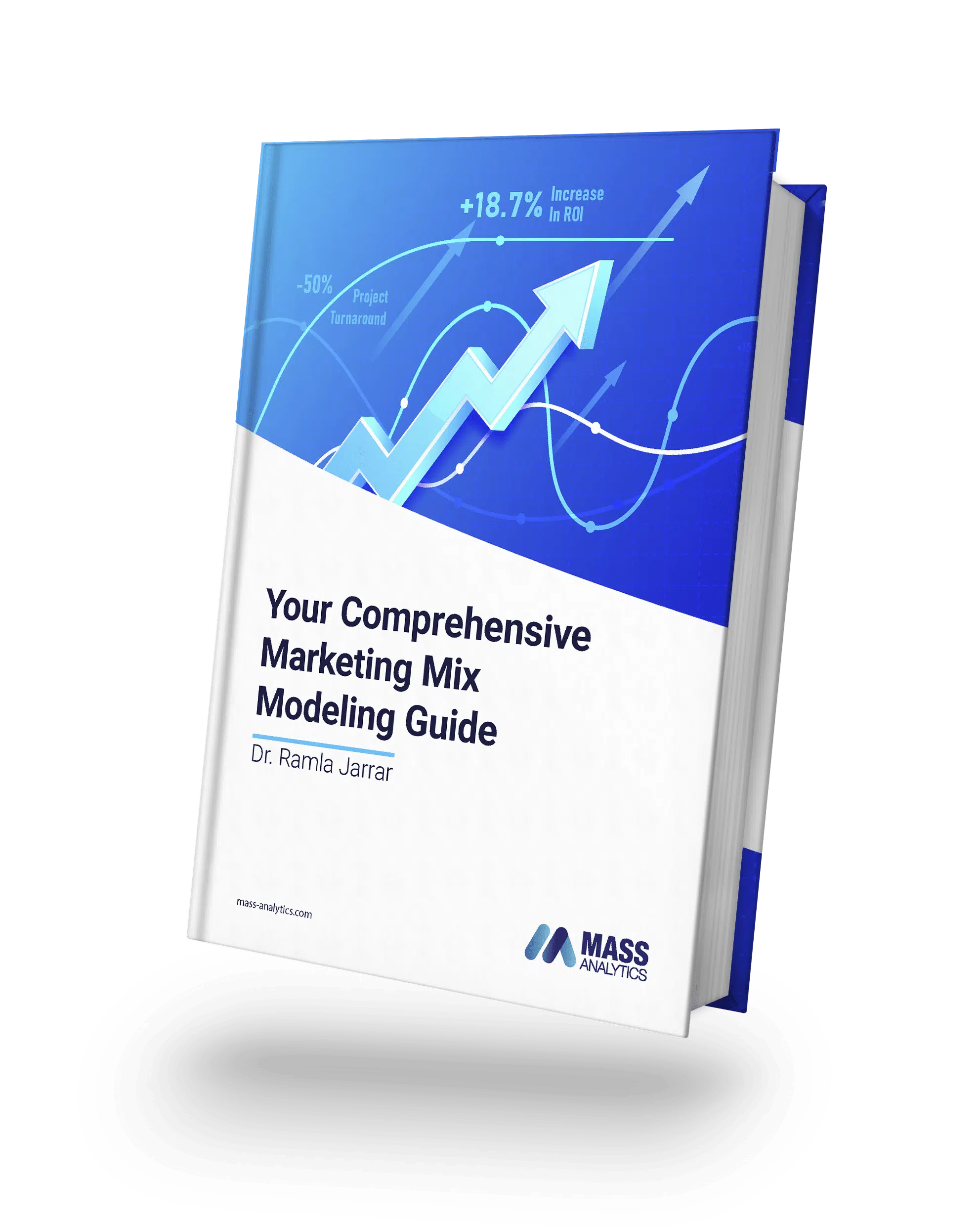How to Make Your Marketing Mix
Model More Actionable
How to Make Your Marketing Mix
Model More Actionable

Running a Marketing Mix Model project allows brands to go beyond acquiring a functional measurement system. It provides them with applicable results that could trigger immediate actions.
This is why creating an insightful and actionable Marketing Mix Modeling is crucial to reaching the company’s goals. And while there are so many factors to take into account, here is a list of trusted tips we’ve assembled. They should serve as a practical starting point to making the MMM projects more actionable.


A time-efficient
Marketing Mix Model

We live in a fast-paced world with constant changes, in both, consumer behavior and best-performing media channels. This has been further established throughout the 2019 pandemic.
In fact, “COVID-19 has accelerated what could be 10 years’ worth of change” (Alex Owen) and has completely shaken the measurement industry. This creates an increased urgency to think and act fast. So, when creating a contemporary MMM project, it’s necessary to make quick assessments of each marketing channel’s investments.
Creating a Marketing Mix Modeling project is a complex process with multiple sophisticated steps that can take anywhere between 12 – 16 months to finish. By the time the analyst completes the project, the data used to assess the company’s marketing performance, might no longer be relevant. To solve this problem, automation needs to be built in to shorten the Marketing Mix Model project timeline. This will require full leverage of modern technologies. In fact, every step can be automated and one can save between 50 – 70% of the time needed to achieve each step. You can learn more about the automation process here.
An essential step to automate is Data Preparation since it can save up to 70% of the time needed for this phase. Another step that should be automated is Modeling. This will allow the user to assess different hypotheses and models at once. It will also allow the ROI, Contribution, Sales Uplift, and Diminishing Returns to be summarized in one single view making way for a holistic model assessment. And generally, automating this step can save between 50 – 60% of the time it usually requires.
A robust system to
reduce human error

Creating a Marketing Mix Model requires the data analyst to go through the initial steps, which are data collection, cleaning, and processing.
The data collection step requires collecting data from multiple sources. With the massive amounts of data and the multiplication of data sources, one should never assume that the information is correct. Also, the cleaning and processing step often includes tasks that need to be performed manually. This includes understanding the data, deciding which data transformations to perform, and reporting model results. Naturally, this will result in some type of human error.
Therefore, for the model to be robust and actionable, it must be able to detect and prevent these errors to generate accurate and intuitive results. This can be done by incorporating input validation algorithms within the data analyst’s DIY marketing mix modeling process, or the acquisition of dedicated MMM software that was built around the principles of accuracy and time efficiency.


An agile system that can quickly respond to change

We live in a world where change is the only constant; and of course, there is the 2019 pandemic that has completely shaken the Marketing Mix Model industry.
Therefore, creating an MMM that is adaptable to change is crucial with the various new external inputs that could affect the brand. The only way to do this is to use an iterative approach by automating the Marketing Mix Modeling process. This is because manually creating the MMM would require the analyst to start from scratch every time new data input variables appear.
It’s easy to overlook the need to adapt and stick with an outdated MMM system that has previously worked for the company. We see this in many companies that remain with outdated structures and processes despite the various issues that they face. But it’s important to re-align their strategies to respond to the new changes. This can be done by creating an MMM system where the analyst constantly re-evaluates inputs, plans, goals, and results iteratively. This will require robust MMM software that provides automation through the deployment of AI so that the model learns to respond to quick changes.
An optimized
Marketing Mix Model

AI-powered software can accelerate models’ building, iterate through the MMM steps for high-quality models and automate steps to minimize human error. But while all of these tips contribute to optimizing your model, many other tips will ensure an optimal Marketing Mix Modeling.
Check out our MMM Master Classes. One valuable solution would be to streamline the data preparation by automating the process. This consists of using software that saves a predefined data preparation sequence, which the data analyst initially sets up. This will allow for quick automated data-prep when the next stream of data is available to easily prepare for modeling. If you’re interested in automating this step, please find our data-prep software MassFeeds here.
Another solution that could easily be overlooked is linking the modeling to reporting, for efficient results. Typically, the delay between the time the model is finalized, and the time insights are ready, can be around 2 weeks. By leveraging technology to link these two steps, changes in the model get automatically updated in the reports and results step. This is incredibly efficient for your contemporary Marketing Mix Modeling.
Finally, it’s important to leverage technology to optimize your models across different products, channels, and regions. Our team has worked hard to develop an optimizer that helps clients optimize their budget.


Marketing Mix Modeling results must be confirmed and embraced by clients

Creating a great model is not sufficient to ensure its deployment by the client. It’s crucial to empower clients to understand and apply insights from it.
The client might have their views when it comes to the performance drivers that they believe are worth investing in. Also, they might have a lack of understanding of the marketing mix modeling process and therefore find it hard to trust or apply the results. This is why it’s important to involve the client in all the project steps and communicate results through good storytelling and data visualizations. This will help eliminate bias and convince the client to make the necessary budget adjustments.
Also, if the brand chooses to in-house MMM, they further guarantee that the deployment part of the MMM process runs smoothly. This can drive down the cost of the marketing Mix modeling project and protect the client’s data. The modeling agency can also invest in training the company’s analytics team. This will allow them to better understand their MMM results and take the necessary actions in the long term.
Conclusion
It’s important to walk the clients through the MMM journey until the very last step of validating and applying the results. This will ensure that the investment in MMM is followed by an impactful growth of the company’s revenue. In today’s modern world, creating a fast, agile, optimized, and usable Marketing Mix Modeling is a key element for creating a robust marketing effectiveness measurement.
At MASS Analytics, our suite of software solutions incorporates all the tips described above to help make MMM projects insightful and actionable. To perform your Marketing Mix Modeling and optimize your budget, our products MassTer, MassFeeds, MassTer Insights, and MassTer Server are available to automate your journey towards efficient Marketing Mix Modeling. For more assistance and guidance along the way, consider our consultancy or training services.







